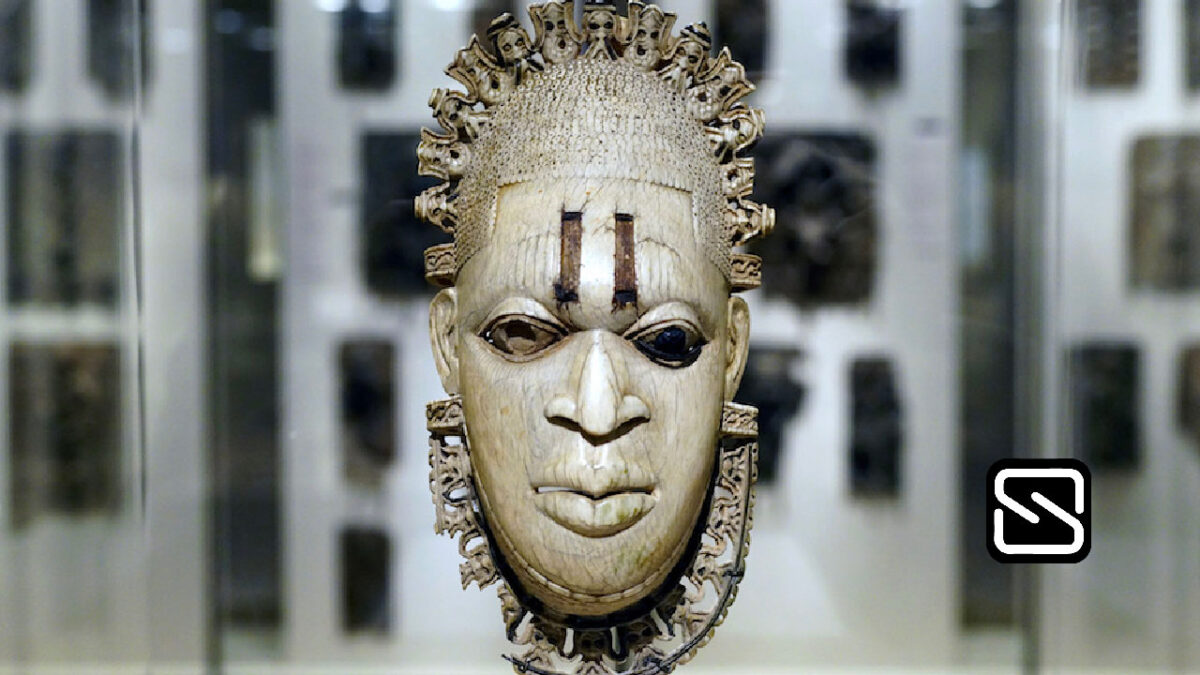A young Nigerian man is attempting to reclaim Africa’s artwork from museums across the western world. 34-year-old Chidi claims that most of it was looted from African territories during the colonial era and should be brought back home. But rather than physically breaking into museums and carting away the works of art, he wants to repatriate them digitally.
“This is the first digital repatriation of stolen artwork,” said the Nigerian creative designer and founder of Looty, who declined to give his surname because he wants people to focus on his project and not him as a person.
“I had this idea that: Why don’t we take back the physical works of art into the digital world?”
Following the escalating discussions around non-fungible tokens (NFTs), which seek to provide public evidence of ownership of digital files, he came up with the idea for Looty.
While the legal rights granted by NFTs are not always clear, they are growing in popularity.
The first tweet by Twitter creator Jack Dorsey sold for $3 million (£2.4 million), and an arrest warrant for South Africa’s late anti-apartheid icon Nelson Mandela was auctioned for $130,000.
The NFT discussions are taking place at the same time that more people are demanding the return of artwork taken from Africa by European colonizers.
“We were reviewing the artifacts’ provenance and ownership. What if I could return them and convert them to NFTs?” Chidi explained.
The process of repatriating the artwork begins with Looty investigating prospective items and then visiting museums to scan them using special mobile phone apps.
Afterwards, the images are downloaded onto laptops and the complicated process of converting them to 3D begins, using special apps and technology.
“To be honest, it is almost like we are re-sculpting the artwork again,” Chidi said. “One piece can take like a whole week to finish, maybe more.”
The Looty website will go live on May 13th, but development began in November 2021.
Chidi is the founder, but he works with two other Nigerians and a Somali.
Each member of the team has a different area of expertise, such as 3D design, NFT technology, and editing, but they’ve all visited museums in the UK and France to photograph artwork with their phones.
They’ve created around 25 different pieces thus far, including some of the famed Benin Bronzes that once adorned the royal palace of the kingdom of Benin in what is now Nigeria, and they’re planning on making many more.
Chidi acknowledges that the word “Looty” is associated with “looting,” a violent act, but insists that his choice of name for the project has a deeper significance.
Captain John Hart Dunne, a British serviceman, arrived from Peking (now Beijing) in 1860 with a strange dog, which he offered to Queen Victoria as a gift for her “royal collection of dogs.”
The famous dog, nicknamed Looty for its origins, was supposedly kidnapped after the British sacked a royal residence in Peking and sat for paintings and sketches by renowned painters.
Looty was one of the earliest Pekinese dogs in the United Kingdom, and he stayed in Windsor Castle until his death in 1872.
Rumors circulated in the media in 2018 that the Chinese government was involved in a wave of art heists in the West that targeted Chinese art and artifacts.
Even after one of the stolen works of art reappeared on display at a Shanghai airport, the Chinese Government refuted these charges.
“Before the British were looting artifacts in Africa, they had already made a fortune from the things they stole from China. In choosing the name ‘Looty’, I am referencing that, but also referencing the dog that was given to Queen Victoria,” Chidi said.
“Even though we are called Looty, we are doing it in a non-violent way and also a legal way.”
Chidi has two goals in mind for Looty. The first is repatriation, which involves reclaiming stolen artwork and connecting it with local African museums, arts organizations, and Africans in general, whom he refers to as “the original owners of these artifacts.”
The second is compensation, which he feels would benefit African artists who have had their possibilities for inspiration taken by British looters.
“If you live in maybe Benin and you want to be inspired by the artwork that comes from your ethnic group, first you need to apply for a visa, then buy the ticket for a plane, get to England, and book hotels. You then go and view the artwork. There are not many people who are going to be able to do that,” Chidi said.
Chidi hopes that viewing the artwork on Looty would not only inspire African artists at home but that the artwork’s sale will also provide funding for local artists to further their skills.
Only cryptocurrency can be used to purchase NFTs of artwork on the website.
“The token is basically a digital contract. On purchase of any pieces of artwork on Looty, 20% of that will go to the Looty Fund. From that Fund, we are going to start giving grants to artists from the continent. We will donate money and equipment for artists to use,” he said.
While Chidi thinks that all of the activity will eventually result in the repatriation of every single piece of art plundered from Africa by colonialists, he still fantasizes about a different future.
“I want to build our own metaverse where these pieces will live and can live,” he said.
